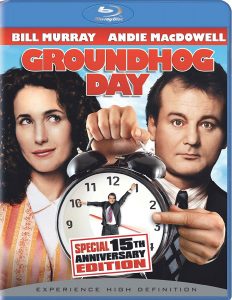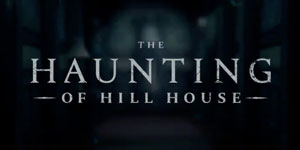Some people won’t watch horror movies or TV series because they don’t want to be scared. As I was drying my eyes after watching the beautiful ending of Netflix’s “The Haunting of Hill House,” I thought “Those people are missing out.” The horror genre has always been a way to work through real-life fears in the safety of a fictional journey, but showrunner Mike Flanagan’s 10-episode series does it better than almost anything before it.
Ghosts as metaphor for mental illness
A lot of genre films use a simple device wherein someone can see ghosts and everyone assumes they are nuts; the story concludes with the hero being vindicated when the ghosts wreak wider havoc. But “HOHH” goes further: It uses ghosts as a tool to explore mental illness, along with normal human reaction to traumatic events. The degree to which each character admits to seeing ghosts says a lot about them.
Loosely based on Shirley Jackson’s classic 1959 novel (which was made into movies in 1963 and 1999), the series follows the Crain family: One set of actors plays the younger versions in the 1980s; another plays the present-day versions. The comparison that pops into my head is “This Is Us,” as the viewer is asked to put together the time-jumping puzzle of the intra-family relationships. And there’s a touch of “Lost”-ian or “Westworld”-ian mystery as we wonder “What’s behind the red door?”

“The Haunting of Hill House” (2018)
Netflix, 10 episodes
Creator: Mike Flanagan
Stars: Michiel Huisman, Carla Gugino, Henry Thomas
That’s about half of the show. The other half is, well, people living in a haunted house. The five Crain children grew up in the mansion-esque Hill House, and it has affected them all, to different degrees. Eldest son Steve (Michiel Huisman) puts his experience on paper and jump-starts a writing career, whereas young Nell (Victoria Pedretti) lives in terror, unable to shake a pesky apparition.
“HOHH” never feels clichéd or predictable, though, because of how it blends these seemingly disparate yet wonderfully complementary genres. In the already-lauded sixth episode, “Two Storms,” the Crains gather at a funeral home owned by the eldest daughter, Shirley (Elizabeth Reaser). It’s storming and the power goes out.
There’s tension among the family, in part because dad Hugh (Timothy Hutton in present day, Henry Thomas in the flashbacks) won’t tell his kids exactly what happened on that fateful night when they fled Hill House. (Answers aren’t forthcoming until episode nine, but such is the show’s quality that I didn’t care. The bingeable Netflix format also helps.)
Warmth amid the hauntings
But there’s also warmth as Hugh and mom Olivia (Carla Gugino) calm their five kids during the first big storm in their time at Hill House. In this artistic episode filled with no-cutaway shots, Hugh wanders from the funeral home directly into Hill House, and back in time. There are also creepy moments in the funeral home. “Two Storms” has the traits you look for in a scary story, but I come away with sympathy for the Crains and a good grasp of their personalities.

My favorite episode, though, is the one before that, “The Bent-Neck Lady.” Youngest child Nell (Violet McGraw as a kid) has spent her whole life scared of the titular ghost. Indeed, we learn what her siblings do for a living – aside from Nell’s jobless twin Luke (Oliver Jackson-Cohen), a drug addict – but if we’re ever told Nell’s profession, I spaced on it.
She’s incapable of becoming a functioning adult, and this episode paints her life as a beautiful tragedy with highs (she marries a wonderful man who is a sleep technologist) and harrowing lows.
As much as I’d like non-horror fans to experience the heartfelt family drama, I have to acknowledge that “HOHH” is moody, creepy and sometimes check-your-shorts-afterward terrifying. Folks who’ve finished the series will know what I mean when I mention “the car scene.”
My personal favorite scare, though, comes from episode three, “Touch,” the series’ best hour for pure horror. It involves Luke (Julian Hilliard) in a malfunctioning dumbwaiter (and don’t they always malfunction when kids ride them like elevators?), a basement that’s not on the blueprints, a flickering flashlight, and something behind a dusty crate. Flanagan’s show passes Horror 101 with an A-plus.
Ghosts in the darkness
In a more subtle touch, “HOHH” peppers ghosts (unseen by the Crains) into the backgrounds, a strategy similar to the random demon faces in “The Exorcist.” I heard about this from an online article, but even searching every frame like it’s a “Where’s Waldo?” illustration, I only spotted one unacknowledged ghost. Even if we don’t spot every ghost, I suspect their presence adds to the vibe we soak up subconsciously.
The acting deserves mention, too. In “Eulogy,” Robert Longstreet, as bearded Hill House caretaker Mr. Dudley, delivers a single-shot monologue about his experiences with the house that seeps into a viewer’s bones.
Hilliard, as young Luke, is loveable yet clearly “the weird kid,” and then Jackson-Cohen takes the baton as a druggie adult, who I totally sympathized with even though he’s the supreme F***-Up among the Crains. Also among the young actors are Mckenna Grace (as Theo), who showed range in “Gifted,” and Lulu Wilson (as Shirley), who was in “Sharp Objects”; both will have fine careers, yet they are low-billed here because the cast is so loaded.
Looking at the description of Jackson’s novel – which I need to read – it seems Flanagan has taken liberties, but I suspect the final voiceover comes from the author’s description of Hill House. It’s in the style of Gothic horror as it would appear on the page, so it’s a fitting homage if nothing else.
But as we hear Steve’s descriptions of bricks and hardwood, it seems he’s describing something alive. These 10 episodes make the house come to life, and not merely as place of creepy shadows and scary spirits, but as a place of flawed and loving humans.

